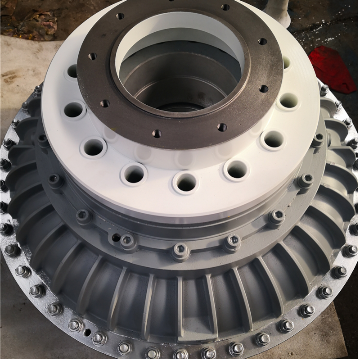
Use and Maintenance of Torque Limiting Hydraulic Couplings:
2023-07-11 11:561. Installation and disassembly
1) Hydraulic couplings are usually cast with aluminum alloy, and direct hammering is not allowed during installation and disassembly. During installation, lubricating grease should be applied to the shafts of the working machine and power machine. Specialized installation and disassembly tools are needed.
2) Before installation, first inspect and calibrate the coaxiality between the power machine shaft and the working machine shaft. For hydraulic couplings with elastic couplings, the coaxiality tolerance should be less than 0.4mm. The larger sizes the coupling specification, the higher the power machine speed, and the relatively smaller the coaxiality tolerance.
3) The pulley type coupling is usually cantilever mounted on the power machine shaft and fixed with tensioning bolts. The tightening direction of the tensioning bolts should be opposite to the turning direction of the power machine.
2. Filling and inspection
1) The fluid filling amount of the coupling should follow the regulations in the oil filling sheet.
2) Hydraulic couplings generally use oil medium. The recommended working fluid is hydraulic transmission oil. The hydraulic couplings used in underground coal mines uses clean water and refractory liquid as the medium.
3. Safety protection device
1) The fusible plug is an overheat protection device for the hydraulic couplings and cannot be replaced by other plugs.
The fusible plug can effectively protect the hydraulic couplings from overheating, but the spraying of working medium can cause pollution and inconvenience. To avoid this kind of situation, two types of temperature control switches can be used (non-contact electronic alarm device, contact mechanical travel switch device).
4. Precautions
1) The output direction of the hydraulic couplings is consistent with the direction of the power machine, and the power machine can rotate in both directions, but sharp forward and backward transitions should be avoided.
2) Regularly check the quality of the working medium and the wear of the flexible elements for timely replacement.
3) Non professional personnel are not allowed to disassemble and assemble the coupling at will to avoid damaging the sealing and balance accuracy.

